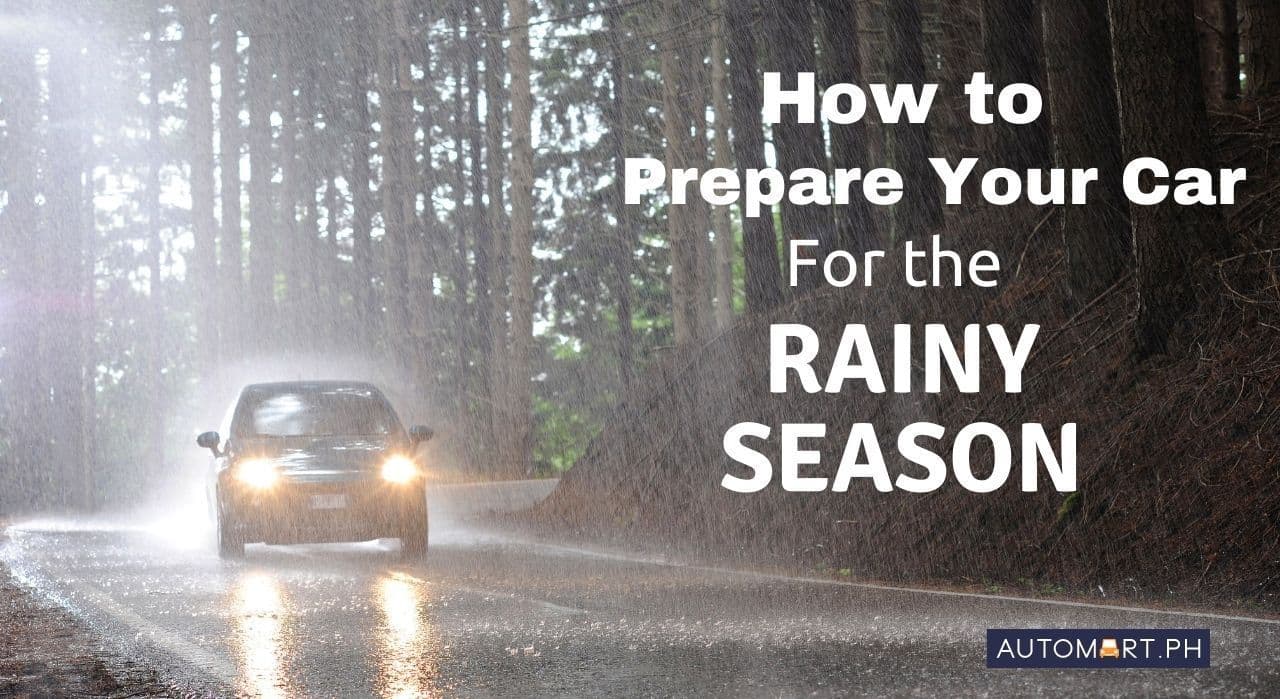
How to Prepare Your Car For the Rainy Season
Updated on December 19 2025
Before the rainy season officially begins, it’s better to take a second look at your vehicle and ask yourself: Is my car ready for wet weather driving? Here are some helpful tips on how to prepare your car for the rainy months ahead.
Rainy Season Vehicle Checklist
Do you want to drive confidently in the rain? Check the following items before the monsoon season starts.
Step 1: Inspect the lights.
Park your car, engage the handbrake, and turn on all the lights, including the daytime running lights (DRLs), headlights, foglights, turn signals, hazard flashers, and taillights. Make sure that all the lights are working. If you find a broken or busted bulb, replace it immediately.

When driving in rainy weather or heavy downpours, road visibility is the number one factor in preventing accidents. Also, driving a car with busted taillights or headlights is illegal and will merit a violation ticket from your friendly traffic enforcer.
Step 2: Check the tires.
The tires in your vehicle are responsible for keeping you on the road. Balding or worn-out tires will not offer much traction and grip when driving in the rain. Unbeknownst to many, the tires play a significant factor when braking to a stop. Even if your brakes are good, the vehicle won’t stop readily if your tires are bald.

You can avoid accidents when the roads are slippery by replacing or rotating the tires before the rainy season starts. We know that new tires don’t come cheap, but you can’t put a price on your and your family’s safety.
Tip: If your tires are relatively new, make sure to check the tire pressure regularly. If you do not know the ideal tire pressure, read the owner’s manual or check the placard on the driver’s side pillar. In most cases, maintaining a tire pressure of 30 to 32 PSI is ideal for vehicles equipped with 15-inch to 17-inch tires.
Step 3: Inspect the windshield wipers.
When driving in a sudden, heavy downpour, the windshield wipers are your best friend. Old wipers are not as efficient in clearing the windshield of excess water and moisture as new wiper blades. It’s a good idea to replace the wiper rubber or wiper blades at least once or twice a year, preferably after the summer months end and before the rainy season begins.

You can learn more about how to care for, restore, and replace the wiper blades in your vehicle by clicking here.
Tip: You can apply Rain-X or any other windshield treatment to improve visibility further when driving in the rain.
Step 4: Check or replace the battery.
The best time to replace your car’s battery is before the rainy season begins. Dealing with a weak or faulty battery is a huge hassle, and it’s doubly more so if your car breaks down in the rain. If you have a multimeter, you can check if the car battery is maintaining a 12-volt charge.
But if you don’t know how to use a meter, you can bring your car to a battery shop and have the battery checked there. Better still, you can replace the battery and save money by following our tips here.
Step 5: Inspect, replace, or refill all vehicle fluids.
Yes, we mean the engine oil, coolant level, washer fluid, brake fluid, and automatic transmission fluid (ATF) or clutch fluid. Again, it all has something to do with preventing breakdowns and keeping your car running when driving in inclement weather.

Engine Oil - Open the hood and pull out the engine oil dipstick. Wipe the end of the stick with a clean cloth and insert the dipstick all the way to get an accurate oil reading. If the oil level is low, you can either refill or change the oil altogether.
Coolant Level - Inspect the coolant reservoir and refill if necessary. NEVER open the radiator cap when the engine is hot.

Washer Fluid - Refill the windshield washer reservoir with clean water or any type of washer fluid.
Tip: Remember to inspect all vehicle fluids every time you fill the car with fuel.
Conclusion
It does not matter if you have a new, used, or repossessed car. It’s a brilliant idea to double-check the lights, tires, windshield wipers, car battery, and all vehicle fluids before the rainy season begins.